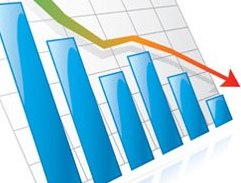Smithfield Foods 1st quarter results – losses reflected

“This first quarter loss reflects the continuing adverse business environment in the hog production segment of the company’s operations.”
“While raising costs have continued to decline and the pork processing segment continues to deliver strong profits, they were not sufficient to offset the negative impact of low hog prices on the hog production business. The sharply lower hog prices reflect the impact of the A(H1N1) outbreak at the end of the prior quarter and softer export demand,” said C. Larry Pope, president and chief executive officer.
©
“We continue to execute the Pork Group restructuring plan on or ahead of schedule. Five of the six plants that were targeted for closure have been closed and the remaining plant will be closed in the third quarter. Smithfield is already benefitting from the Pork Group restructuring plan and we are on track to achieve annual cost savings of approximately $55 million, after applicable restructuring expenses, in fiscal 2010 and $125 million by fiscal 2011,” he continued.
©
“On the financing front, a new $1 billion asset backed lending (ABL) credit facility, together with a new $200 million term loan and our July and August notes offerings, totaling $850 million, have positioned us to retire all near term debt maturities, repay our revolving credit facilities and further reduce our exposure to financial covenant risks, while maintaining ample liquidity. These steps have strengthened our balance sheet and helped position us to better weather the current economic environment,” Mr. Pope concluded.
©
Pork© – Fresh Pork
Fresh pork volumes, average unit selling prices, and margins were weak throughout much of the quarter resulting in losses in fresh pork. First quarter results were the direct result of lower exports and a modest drop in domestic foodservice demand as a result of the recession. Fresh pork returned to profitability late in the quarter and continues to be solidly profitable in the early weeks of the second quarter.
©
Fresh pork exports declined 34% from last year’s record, primarily due to a substantial decline in sales to China. However, in historical terms, export volumes remain robust.
©
Packaged Meats
The company’s packaged meats business delivered very strong profits in the first quarter. Pricing discipline and rationalization of unprofitable business pushed margins higher despite a 9% reduction in sales volume and $6 million in charges related to the restructuring effort. Operating results were nearly $74 million higher than the prior year results. Results benefited from permanent improvements in operating efficiencies and plant utilization, as well as reduced raw material costs.
©
International
The company’s meat processing operations in Poland and Romania were profitable in the quarter in spite of relatively high raw material costs. Sales volumes in these two countries improved a combined 10% over last year. Campofrio Food Group results contributed income of $3.6 million in the quarter versus a loss last year.
©
Hog Production
Hog production losses continued in the first quarter, despite reductions in raising costs. Live hog market prices in the U.S. decreased 24% to $42 per hundredweight compared to $55 per hundredweight in the same quarter last year, due to an oversupply of live hogs in the U.S. Domestic raising costs decreased from the prior year and the fourth quarter of fiscal 2009. Domestic raising costs decreased to $59 per hundredweight from $61 per hundredweight in the prior year and $63 per hundredweight in the fourth quarter of fiscal 2009.
This quarter’s losses include a non-cash impairment charge of $34.1 million related to the write-down of farm assets of non-core hog operations in which the company is ceasing production or offering the farms for sale.
©
As previously announced, the company reduced the size of its U.S. sow herd by 10% in reaction to overall industry conditions and to modestly reduce its exposure to the live production side of the business. This has resulted in a reduction of 100,000 sows. In June 2009, the company announced a further reduction of its sow herd by 3%, or approximately 30,000 sows. The company believes these actions will result in approximately 2.2 million fewer market hogs annually by fiscal 2011.
©
For more info and to see full report, visit Smithfieldfoods.com











